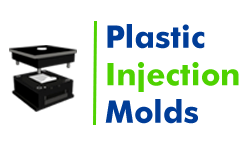- Mould Manufacturer
- Tooling
- Moulding Die
- Plastic Molding
- Plastic Injection Molding
- Injection Molding
- Nylon Injection Molding
- Injection Moulding
- Custom Injection Molding
- Injection Mould
- Injection Mouldings Process Manufacturers
- Medical Injection Molding
- Polycarbonate Injection Moulding
- Rapid Injection Moulding
- Injection Molds
- Injection Molding Cost
- Injection Molding Suppliers
- Injection Moldings
- HDPE Molding
- Metal Injection Molding
- Rubber Injection Molding
- Mold Designing
- Prototyping
- Automotive Injection Molding
- Blow Molding
- 3D Printing
Qualities that Signify injection molding manufacturers
If you are preparing to entrust the injection molding production to a manufacturer, you are basically approaching a partnership. Justifiably, you would expect the manufacturer to meet your needs continuously and maintain the quality of production consistently. Timely output is mandatory if you are planning for much value addition to the business.
However, if you are looking for the best injection molding manufacturers for the first time or want to change the partnership as you had a bad experience with the former manufacturer, you should know what to expect from a competent manufacturer. You can seek business only when you know how to judge the manufacturer.
1. Appropriate certification of injection mold manufacturer
The injection moulding industry works on strict guidelines, considering that it is vital to meet the standards of plastic parts in areas like the medical industry. You should verify whether the manufacturer holds the certifications like:
- Design and production certification: The IQ/OQ/PQ process validation is essential to ensure the equipment quality present with the injection mold manufacturer. Also, the documented training certification with design software is crucial to determine proficiency in prototyping.
- Quality control and assessment certification: ISO series of certifications are mandatory to signify that the manufacturer maintains the high quality of management system.
- Material safety and sourcing certification: traceability is important in the medical industry and some other industries. So you must ensure that the manufacturer possesses documented knowledge of the domestic and foreign laws and ethics.
2. Level of quality control
Experienced injection mold manufacturers are always careful about quality control and safety measures, which are integral parts of the plastic injection molding process. The incredible amount of precision is the result of the manufacturer's attention to every minute of detailing. It develops in the manufacturers who:
- Work with a huge range of thermoplastics
- Already worked in the high-precision markets such as life sciences, electronics, and medical.
3. In-house tooling for injection mold manufacturing
The reputed injection mold manufacturers prefer an in-house tooling system as it increases the quality of products and enhances production lead time. Such companies won't spend unnecessary time on upfront planning and also the time and money for rework.
It will be a testament of the company to prove its dedication to meet the design specifications of injection mold manufacturing of different clients. Your engineers can literally keep track of the entire developmental process.
4. Diversity of markets
Market versatility is evidently a good indicator of quality control. It signifies the stable and successful business of the injection mold manufacturers usa. If you try to pursue an injection molding company that focuses on your industry, it will only limit your customer base. So the business can be low if one o the clients withdraw suddenly. So look for companies that cater to a wide range of industries.
Many steels are involved in injection making mould
Hardened or pre-hardened steel, aluminium, and/or beryllium-copper alloy are commonly used in injection mould making. Steel moulds are more expensive, however they are frequently prefered because to their excellent durability. After machining, hardened steel moulds are heat treated, and they are significantly superior in terms of wear resistance and longevity. Many steel moulds are built to process millions of pieces during their lifetime. Pre-hardened steel moulds are a less wear-resistant and less costly solution for smaller volume production. Aluminium moulds, on the other hand, can be significantly less expensive, but they are often unsuitable for high-volume manufacturing or items with tight dimensional tolerances. Nonetheless, when planned and produced utilising computer numerical control (CNC) machines or Electrical Discharge Machining (EDM) methods, aluminium moulds may inexpensively create tens of thousands to hundreds of thousands of pieces. Copper alloy inserts are sometimes employed in mould sections that require rapid heat removal. This can save cycle time while also improving the part's visual quality.
We offer you services more feassibilly
Plastic Injection molds is renowned as globe’s top injection mold makers. We can supply plastic injection moulds for both rigid plastics and rubbers, metal injection moulds for all types of precision stainless steel components, and pressure die casting moulds for aluminium, magnesium, and zinc since we have mould producing capabilities in-house and resources from our partners. We provide low-cost local manufacturing moulds as well as high-quality overseas moulds for all of your project requirements.
We can handle prototype moulds for short-run manufacturing as well as large production moulds for millions of shots with ease. Although we assess the feasibility of your design when offering a price, we can give a quick and detailed DFM (design for manufacturability) report before production begins. We'll highlight any faults or flaws that might lead to a manufacturing problem in the DFM report. Because we provide a variety of moulds, you may avoid separating your work; simply submit everything to us to guarantee your project proceeds well.
Engineering plastics provide producers with the design freedom they seek to achieve lightweighting and cost criteria for complicated items. Although high-quality plastic materials may be manufactured rapidly and in large quantities, comprehensive modelling is required to customise materials to unique product needs. Injection molding companies in ontario provides a comprehensive range of engineering plastic solutions for the rapid and reliable production of novel plastic parts.
Investing in digitisation is an investment in success, and the plastics sector requires powerful tools for development and beyond. Our extensive and strong technology portfolio allows sustainable product design, assists organisations in transforming the plastics value chain, and helps the industry reach its sustainability and climate protection goals. Anisotropic qualities exist in plastics reinforced with short glass or carbon fibres, depending on how the fibres align during injection moulding. Modern optimisation methods aid in part design and development by using an accurate numerical material description that takes into account the usual properties of the plastic in the simulation.
FAQ
- Q1. Why Is Injection Molding So Expensive?
Injection molding is costly due to several factors. Initial tooling costs are high as molds are custom-made. Material expenses also contribute, with specialized polymers increasing costs. Additionally, setup and labor expenses are significant. Despite the expense, injection molding offers precision, consistency, and efficiency, making it a preferred manufacturing method for mass production.
- Q2. What Is Better Than Injection Molding?
Thermoforming offers advantages over injection molding for certain applications. It's cost-effective for low-volume production, offers design flexibility, and allows for larger parts. Thermoforming also generates less waste and has shorter lead times. However, it may not be suitable for intricate designs or high-volume production needs.
- Q3. Will 3D Printing Replace Injection Molding?
While 3D printing offers versatility for prototyping and small-scale production, injection molding remains dominant for mass production due to its speed and cost-effectiveness. Both technologies have distinct advantages and applications, suggesting a coexistence rather than outright replacement in manufacturing processes.







.webp)

